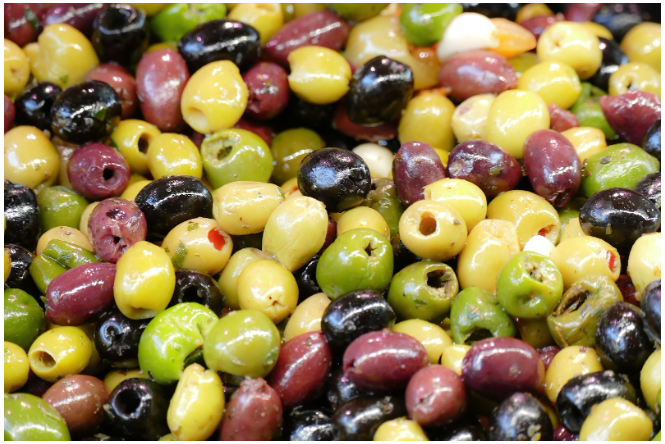Are Olives a Healthy Food?
People often talk about olive oil and the massive health benefits this oil has when consumed as part of a healthy diet. But we rarely hear about the olives themselves.
I only liked the black pitted olives from a can as a kid. The kind kids often choose for their entertainment value when stuck in the ends of our fingers.
No green olives with pimento for me. Yuck-o. And that red pimento with those olives? It made it worse, not better.
I remember reading in a novel once that olives straight from the tree are virtually inedible. Not that they are harmful, but they taste bitter. So, they need brining to be palatable. [Note: brine is a salt-water solution in which food is submerged.]
The black olives are fully ripe fruit.
The green olives are not quite ripe fruit.
The kalamata black olives are wine-based brine.
And today, you can go into grocery stores that have an olive bar with all kinds of varieties of olives and a variety of stuffing such as feta, blue cheese, garlic, and classic pimento.
While people know that olive oil is excellent (it is one of the healthier fats to use), are olives also just as good?
When it comes to olives, it is hard to know for sure.
There are virtually no human studies focusing on olive intake. This type of study would be challenging, though. When it comes to humans, we don’t often eat foods in isolation, and there is a whole pattern of eating and overall lifestyle to consider.
So, while I can provide nutrition information, I don’t find people are eating olives willy-nilly. Instead, they have them as a condiment. They may be part of a charcuterie board, in a martini, service with pickles at holiday meals, or as a topping for pizza and other dishes.
I find olive nutrition information per 100 grams, which is a LOT of olives. Six olives are about 15 grams, so to get 100 grams, that is 40 olives. That is one for each finger and thumb FOUR times. That is a lot of olives.
While olives are primarily monounsaturated fat, there is some fiber, vitamin E, and sodium from the brine.
So for reference, 100 grams of Green Manzanilla Pimento Stuffed Olives is about 130-140 calories, 13 grams of total fat, 4 grams of fiber, nearly 4 mg of vitamin E, and 1,620 mg sodium. Keep in mind this would be for 40 olives.
In just four olives, that is less than 20 calories, less than 2 grams of fat, 1 gram of fiber, 1 mg vitamin E, and 162 mg of sodium.
The big picture here: olives don’t contribute much in nutrients except sodium. As a percentage, they are high in fat, but still not that much overall. People still worry about eating foods high in fat (including peanut butter and avocados).

